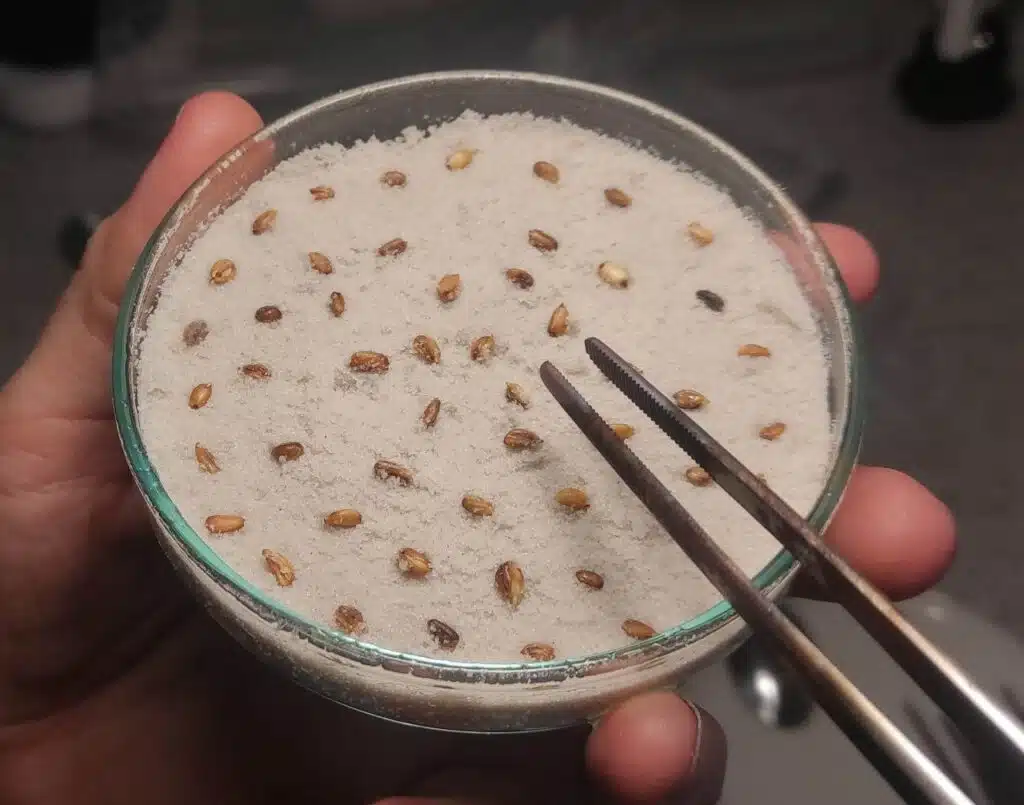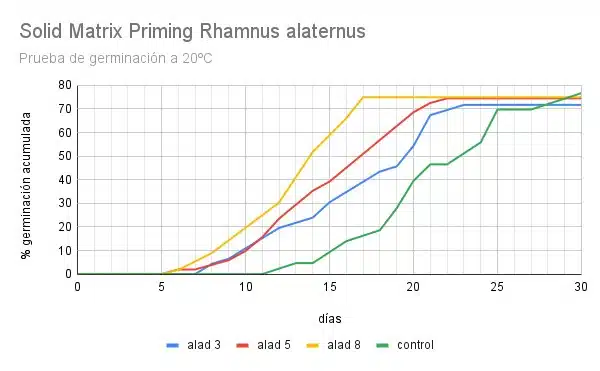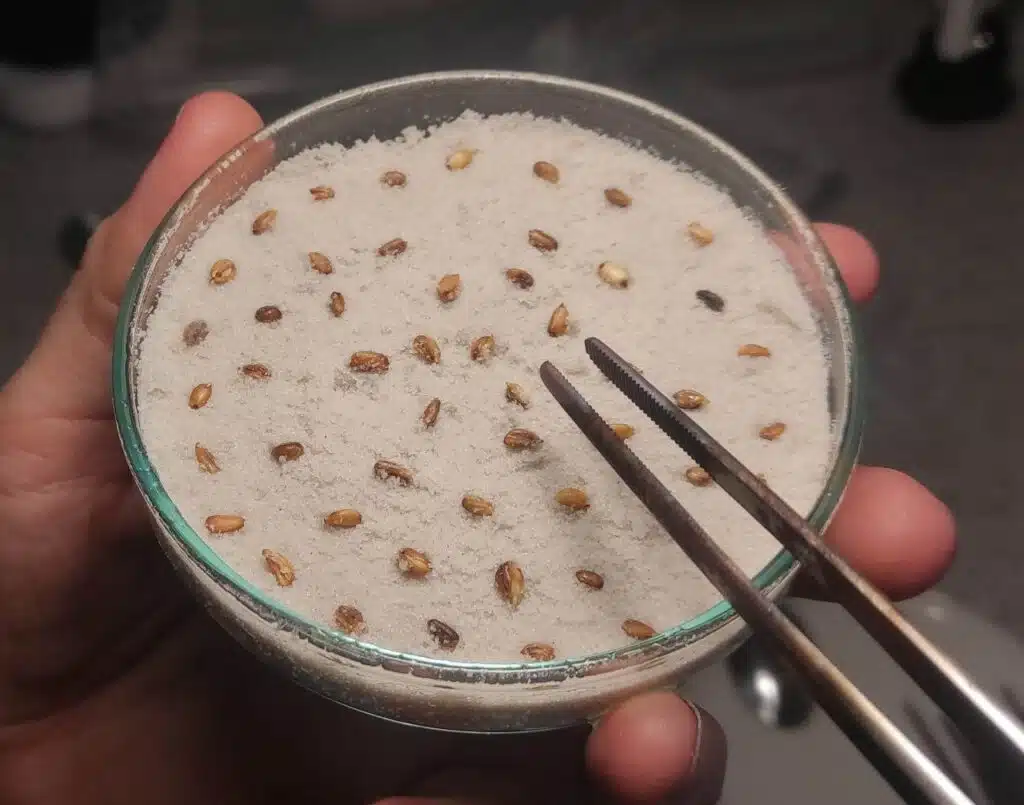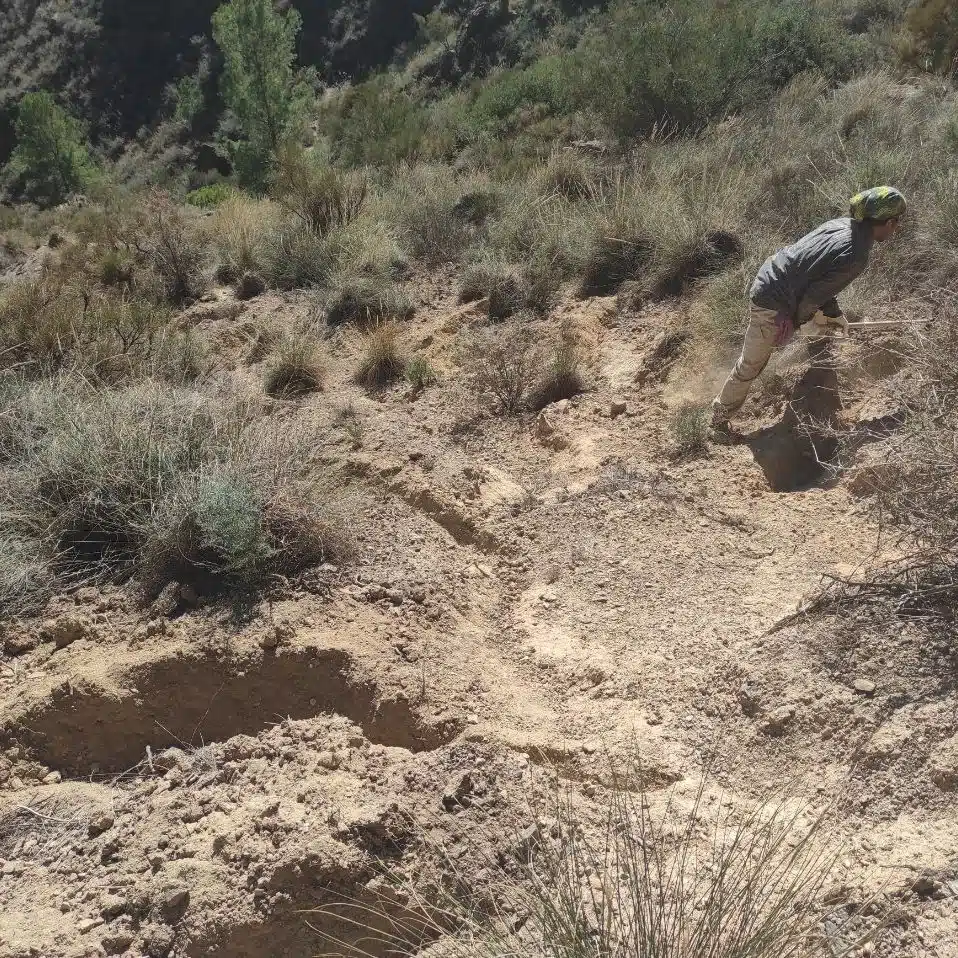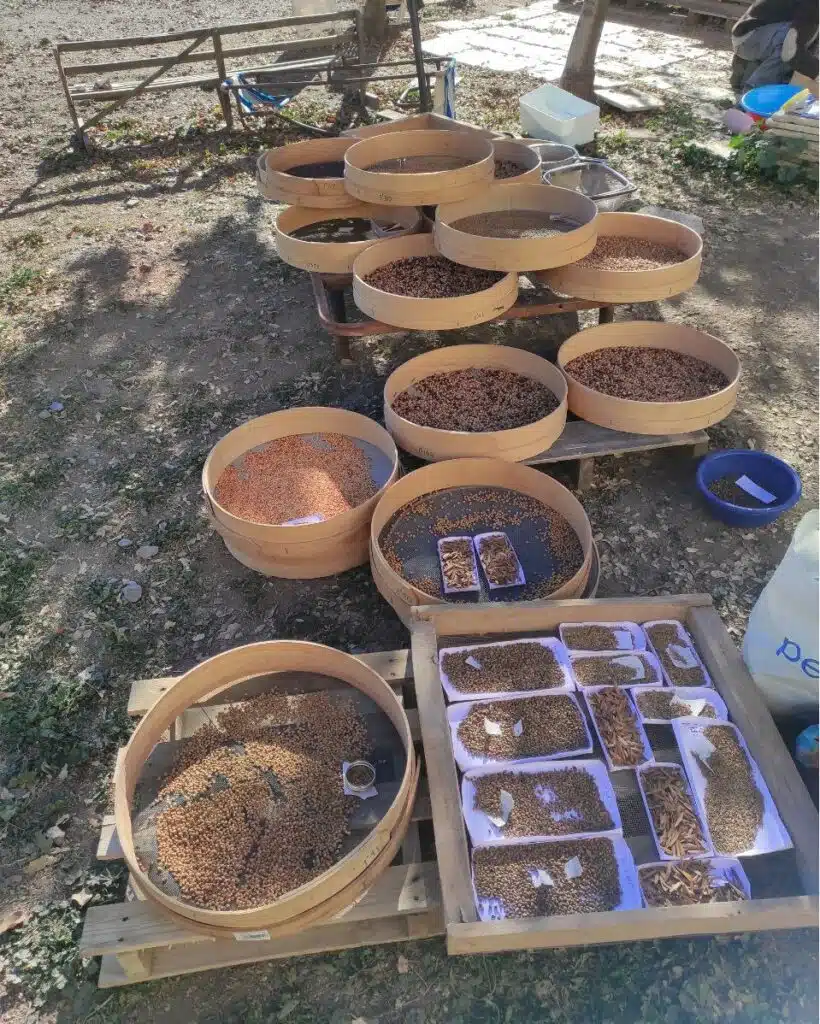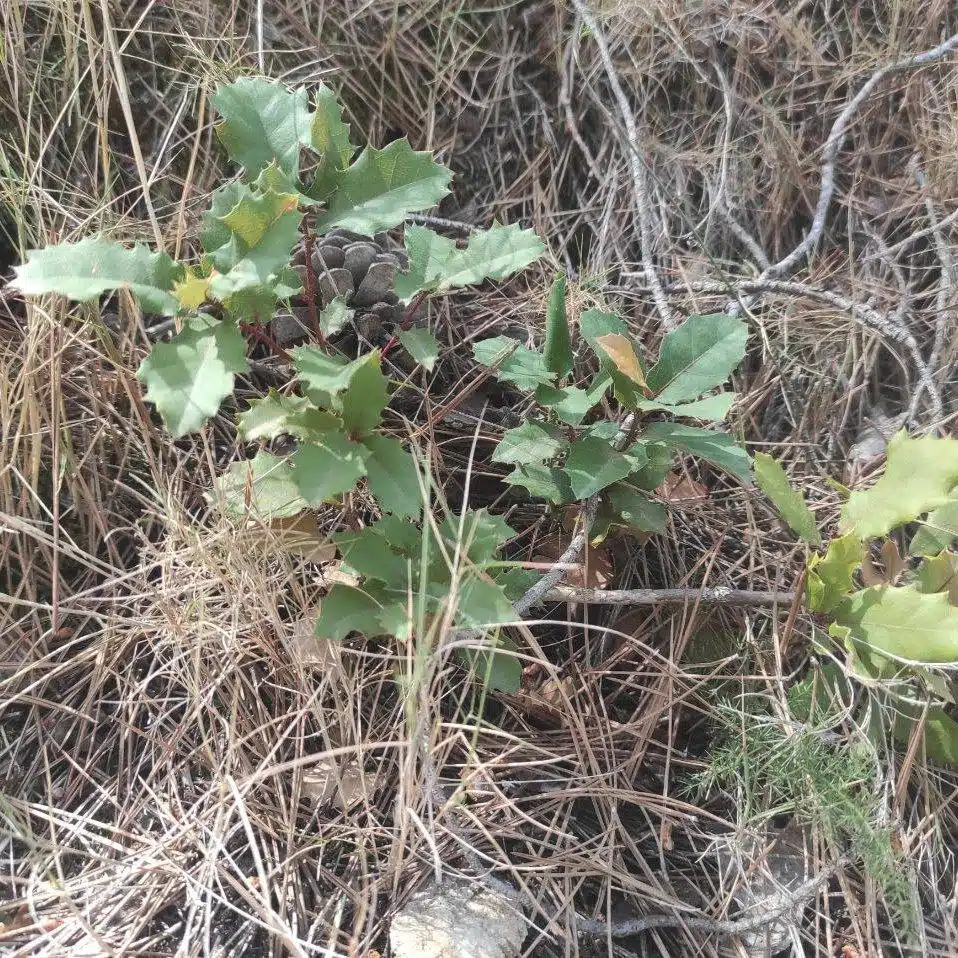At Semillistas, we continue to explore, test and learn. Today we want to share a fundamental part of our work: the laboratory tests we carry out to optimise field sowings.
Recently, we have been working with aladern seeds (Rhamnus alaternus), testing different treatments to improve their germination. In the laboratory, we use Petri dishes with sand in which we place the seeds and carefully record each piece of data. These data, little by little, allow us to construct the germination curves that guide our decisions to prepare the seeds before sowing them in Los Guájares.
In the graphs we obtain, you can clearly see the differences: the green line represents the seeds without any treatment, while the other lines show the effect of different methods of solid matrix priming. This process consists of exposing the seeds to certain controlled conditions to accelerate and synchronise their germination. The yellow line reflects the most effective treatment we have achieved so far, but there is still room for improvement. We see clues that we can adjust certain details to shift the yellow curve further to the left, i.e. to make the seeds germinate even faster and more homogeneously.
These small scientific advances have a big impact on our reforestation work. The better we understand how seeds work and how they react to different treatments, the better prepared they will be in the field, increasing their chances of successfully establishing themselves in an ecosystem that is regenerating after a fire.
Every test, every graph, every germinated seed, brings us a little closer to our goal: to restore forests with increasingly effective and sustainable techniques. We continue to sow science to cultivate the future.
